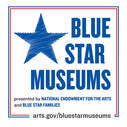COLLECTION GALLERY 3
Secret Russian Explorations in the Pacific
As a matter of policy the Russian and Spanish governments kept their voyages of exploration secret and the two nations published very few maps of their discoveries at the time. That being said, both Spanish and Russian governments had very important stakes in the race for exploration and knowledge. The expansion of the Spanish empire in the New World is well known.
Similarly, the Russians, with their vast Siberian territory to the east, had a major stake in the North Pacific. Stimulated by the successes of other European powers, Russia set out to explore the waters between Siberia and the North American continent. Realizing that, as in many other areas of science and technology, they lacked the navigational, astronomical, and cartographic skills to compete with European rivals, the czars turned to the well-known d l'Isle family in Paris. Invited to Saint Petersburg, Joseph-Nicolas de l'Isle, a younger brother of the famous Guillaume l'Isle, accepted and made his career there. He was a founding member of the Royal Academy of Sciences in Saint Petersburg, and became an important figure in the exploration and charting of the waters between the Kamchatka Peninsula and Alaska. He participated as astronomer on Alexei Chirikov's voyage of 1740 and created in Saint Petersburg a library of maps of previously uncharted portions of Eastern Siberia and the North Pacific. This period coincided with the expansion of Russian settlements and fur trading stations in the Russian Far East and across the Bering Sea in present-day Alaska.
Secret Russian Explorations in the Pacific
As a matter of policy the Russian and Spanish governments kept their voyages of exploration secret and the two nations published very few maps of their discoveries at the time. That being said, both Spanish and Russian governments had very important stakes in the race for exploration and knowledge. The expansion of the Spanish empire in the New World is well known.
Similarly, the Russians, with their vast Siberian territory to the east, had a major stake in the North Pacific. Stimulated by the successes of other European powers, Russia set out to explore the waters between Siberia and the North American continent. Realizing that, as in many other areas of science and technology, they lacked the navigational, astronomical, and cartographic skills to compete with European rivals, the czars turned to the well-known d l'Isle family in Paris. Invited to Saint Petersburg, Joseph-Nicolas de l'Isle, a younger brother of the famous Guillaume l'Isle, accepted and made his career there. He was a founding member of the Royal Academy of Sciences in Saint Petersburg, and became an important figure in the exploration and charting of the waters between the Kamchatka Peninsula and Alaska. He participated as astronomer on Alexei Chirikov's voyage of 1740 and created in Saint Petersburg a library of maps of previously uncharted portions of Eastern Siberia and the North Pacific. This period coincided with the expansion of Russian settlements and fur trading stations in the Russian Far East and across the Bering Sea in present-day Alaska.







